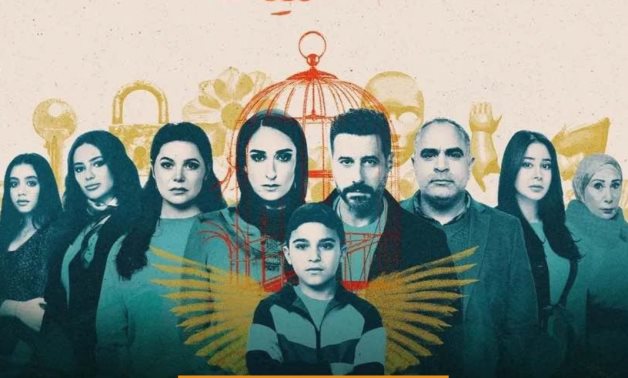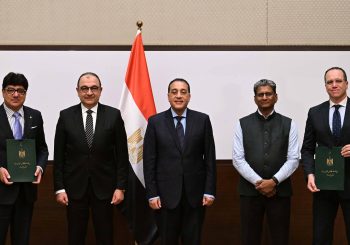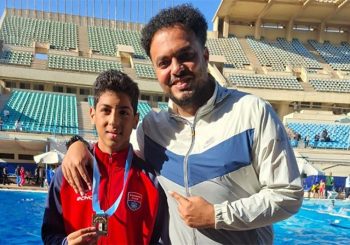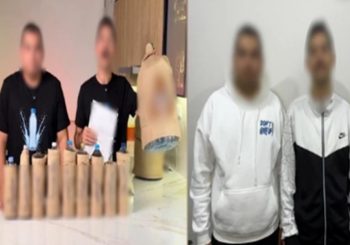In a media landscape often dominated by familiar storylines and recurring social themes, Lam Shamseya breaks new ground. Released during Ramadan 2025, the Egyptian series marks a significant turning point as the first mainstream production to confront the deeply sensitive issue of child harassment. The drama follows the story of Nelly, played by Amina Khalil, who discovers that her stepson, Youssef, portrayed by Ali Beialy, has been sexually harassed by his father’s best friend, Wessam, played by Mohamed Shahin.
This is no small feat in a society where conversations about abuse, especially when it involves children, are often cloaked in silence or brushed aside under the weight of social taboo.
Though data on child sexual abuse in Egypt is limited, a 2018 study from the Ain Shams Journal of Forensic Medicine and Clinical Toxicology offers a disturbing glimpse into the scale of the problem. The study examined 740 reported cases involving children and teenagers aged 1 to 18. Girls made up the majority of victims at nearly 53 percent, and the highest number of cases involved adolescents aged 11 to 18.
Most of the abuse was carried out by a single perpetrator, often someone outside the family, and more than one in four children were threatened with physical violence. Perhaps most alarming, almost half of the victims were not medically examined until more than a week after the assault, delaying both treatment and justice.
The absence of newer national statistics only underscores how underreported and overlooked this issue remains.
By spotlighting the hidden trauma of abuse through the lens of a child and his family, Lam Shamseya not only breaks a cultural silence, but also invites long-overdue conversations around protection, education, and justice for Egypt’s most vulnerable.
Challenging the ‘Trusted Adult’ Narrative
In Lam Shamseya, Youssef’s harasser is not a stranger lurking in the shadows but Wessam, a close family friend and a figure of trust. This portrayal confronts the uncomfortable reality that many instances of child harassment are perpetrated by individuals within the child’s trusted circle. According to the Mayo Clinic’s Child Abuse Overview (2023), in many cases, abuse, including child sexual abuse, is carried out by someone the child knows and trusts, often a parent or other relative.
It also complicates the ability of parents or caregivers to recognize warning signs, especially when the perpetrator is seen as “one of the family.” By depicting Wessam as a charismatic and beloved figure, the series compels viewers to question their assumptions about safety and trust, highlighting the importance of open communication, active listening, and creating safe spaces for children to express discomfort , even when it involves someone close.
The Parent’s Dilemma
While Youssef’s parents in Lam Shamseya chose to confront the abuse head-on, the series doesn’t shy away from showing just how many others remain silent. From people who choose to look the other way to families who hesitate to report, the unspoken thread of fear and shame runs deep. That silence often has less to do with disbelief and more to do with the weight of societal judgment.
According to a 2005 study conducted by the University of Oslo, children often find it difficult to speak up about abuse, not only because of the lack of privacy or supportive space to talk, but also due to confusion, fear of not being believed, or emotional attachment to the abuser.
On the other hand, parents of sexually abused children, especially in tight-knit or conservative communities, often find themselves torn between protecting their child and preserving the family’s reputation. According to a 2020 study by the Centre of Expertise on Child Sexual Abuse, cultural norms and social expectations can become major barriers to disclosure. In these cases, reporting abuse can feel like exposing the entire family to public scrutiny.
In many Middle Eastern cultures, the concept of Satr the idea of concealing one’s flaws, tragedies, or family issues to protect honor, can be a double-edged sword. While intended to preserve dignity, this value can unintentionally create a culture vof silence around abuse. Rather than shielding the child, satr often shields the abuser, leaving victims isolated and unsupported.
It is not just parents that struggle. Victims themselves often carry an unbearable weight of shame and self-blame. A 2021 study published in the National Library of Medicine revealed that anticipated negative social reactions can discourage survivors from speaking out, leading to long-term consequences like post-traumatic stress disorder (PTSD), depression, and social withdrawal.
The series accordingly captures this cycle with painful accuracy, showing how the silence around abuse is often more suffocating than the trauma itself.
The School as a Silent Witness
Youssef’s behavioral changes at school, such as aggression, anger, hostility, and lack of social skills, were met with indifference or misinterpretation by his teachers, even when they recognized that he was not being his normal self. This behavior reflects a systemic issue where educational institutions are ill-equipped to recognize or address signs of abuse.
The series underscores the critical role schools play in child protection and the urgent need for training educators to identify and appropriately respond to potential abuse indicators.
The Long-Term Impact of Unspoken Abuse
The series also explores how buried trauma can resurface years later in unexpected ways. Nelly, Youssef’s stepmother, recalls her own experience of childhood harassment only after learning what happened to Youssef. For years, she suffered from vaginismus, a condition that causes involuntary vaginal muscle spasms, making sexual activity painful or uncomfortable. While often misunderstood, vaginismus can be a response to psychological trauma, including past sexual abuse.
By including Nelly’s experience, the show highlights how silence around abuse does not mean it is forgotten. It can stay hidden, affecting a survivor’s physical and emotional well-being well into adulthood.
The Power of Storytelling in Undoing Shame
By allowing Youssef to narrate his experience in the final episode, Lam Shamseya grants a voice to victims who are often silenced. His fragmented recollection, marked by pauses, hesitations, and a reliance on his father to fill in the details, reflects the authentic and often non-linear way children process and disclose trauma.
According to a 2005 research by the American Psychological Association on child abuse disclosure, traumatic memories in children are frequently disorganized and incomplete, especially when the abuse involves shame, confusion, or fear.
This narrative choice not only fosters empathy but also challenges the viewer’s expectations of how a “believable” account should sound. It reminds us that the inability to clearly articulate what happened is not a sign of dishonesty, but rather a consequence of the psychological toll of abuse and the young age at which it often occurs. Youssef’s difficulty in naming Wessam’s actions speaks volumes, highlighting how children struggle to make sense of experiences they can barely comprehend, let alone describe.
A Collaboration Rooted in Real-World Expertise
To ensure the storyline rang true and handled the subject matter responsibly, the producers of Lam Shamseya worked closely with Sara Aziz, founder of Safe Egypt, an organization dedicated to protecting children and adults from all forms of violence.
Founded in 2013, Safe Egypt offers psychosocial support services and leads the charge in both prevention and intervention efforts related to abuse.
On the prevention side, Safe runs workshops to raise awareness about important topics like bullying, self-confidence, and how to protect children from sexual or gender-based violence. When it comes to intervention, the organization offers both individual and group therapy sessions for those affected.
This hands-on collaboration ensured the series did more than just tell a story, it carried the weight of lived experience, therapeutic insight, and the reality that healing and protection must go hand in hand.
Why This Series Matters Now
Airing during Ramadan, a time when television viewership in Egypt peaks, Lam Shamseya leverages its platform to initiate critical conversations.
By addressing child harassment during this period, the series reaches a wide audience and also challenges societal taboos, encouraging collective reflection and dialogue on a pressing issue.
Lam Shamseya serves as a poignant reminder of the power of media to confront societal issues, challenge entrenched norms, and advocate for change. By intertwining compelling storytelling with critical social commentary, it paves the way for a more informed and empathetic society.







Comments (0)